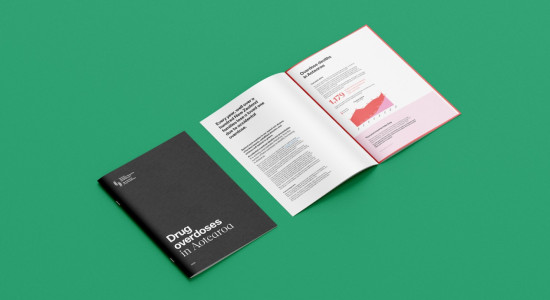New report shows NZ loses three people a week to preventable overdose
Three New Zealanders are lost to preventable, accidental drug overdoses every week, with the number continuing to rise, a new report shows.
Drug overdoses in Aotearoa, released by the NZ Drug Foundation Te Puna Whakaiti Pāmamae Kai Whakapiri on International Overdose Awareness Day, shows 1,179 people have died of accidental overdose between 2016 and 2023.
The Foundation’s Executive Director Sarah Helm says that the report is heartbreaking reading.
“Each of these numbers represents a person whose whānau, friend group and community has been ripped apart,” she says.
The report shows that some groups are impacted more severely than others, including 45-54-year-olds, who have the highest overdose mortality rate of any age group, and Māori, who suffer a fatal overdose rate 2.4 times higher than non-Māori.
“I think New Zealanders will be appalled to see that the number of preventable overdoses in our country is continuing to increase. As a society we simply should not tolerate it. We’ve rightly spent millions of dollars to turn around our road and drowning tolls. We need to do the same for drug overdoses.”
The report shows that opioids (drugs like morphine, heroin, codeine, and fentanyl) are the biggest contributor to overdose deaths, with almost half of all fatal overdoses between 2016 and 2023 involving an opioid.
Helm says the predominance of opioids in fatal overdose statistics, along with the emerging threat of potent synthetic opioids like nitazenes, shows why increasing access to naloxone – an opioid overdose reversal medicine – is crucial.
“We need to get naloxone into the hands of the community – both to turn around this unacceptable number of overdoses, but also to prepare us for what’s coming with nitazenes making their way into our drug supply.”
Nitazenes are a family of extremely potent synthetic opioids that can be deadly in a dose as small as a grain of sand.
Following an application from the Drug Foundation, an expert Pharmac committee has recommended the agency fund nasal spray naloxone for people at risk of opioid overdoses.
For the first time, the report also includes data on non-fatal overdoses. It shows that hospitalisations for drug poisonings have steadily declined over the past five years. Helm says the fact that this hasn’t been matched by a decrease in fatal overdoses is concerning.
“It’s something we need to dig into and understand. It could be due to high potency opioids in the illicit market increasing the likelihood of death and decreasing the likelihood that someone makes it to hospital. It could also show that people aren’t seeking help when they need to.”
Helm says this points to the need for a Good Samaritan law.
“A Good Samaritan law that legally protects people who are seeking help for themselves or someone else who is overdosing is a straightforward way we can encourage people to get the help they need.”
“There are also some concerning discrepancies between those who are dying from overdoses compared to those who are making it to hospital.
“For example, 45-54-year-olds have the highest rate of overdose deaths, but that same age group isn’t presenting at hospital more frequently than other groups. We need to understand what is going on there.”
The NZ Drug Foundation recommends that the Government implement the Foundation’s full Overdose Prevention Plan, including:
- Establish an effective overdose surveillance system
- Pilot an overdose prevention centre in Auckland
- Trial a non-fatal overdose response service to support people who have overdosed and prevent further harm or death
- Expand opioid substitution therapy
- Develop a nationwide naloxone distribution scheme
- Establish a ‘Good Samaritan’ law to legally protect people who seek help for someone who is overdosing
- Expand harm reduction programmes
Key findings from the report:
- 1,179 people have died from an accidental drug overdose between 2016 and 2023.
- 516 of these cases involved an opioid
- Whether or not it was the cause of death, 35.4% of fatal overdoses involved alcohol
- 65.2% of those who died were male
- Over two thirds of fatal overdoses involved at least one medicine (in cases where the coronial process is completed)
- Most fatal overdoses involved more than one substance. More than half of all fatal overdoses involved four or more substances. 43.9% involved five or more (in cases where the coronial process is completed)
- Māori suffer a fatal overdose rate 2.4 times higher than non-Māori
- 15-24-year-olds had the highest rate of hospitalisation for drug poisoning
Share:
Topics
Drugs
Recent news

Report: Drug overdoses in Aotearoa 2024
Three New Zealanders die each week from preventable drug overdose

Potentially lethal dose of methamphetamine found in Rinda pineapple lolly wrapping
The Drug Foundation is warning people not to consume Rinda pineapple lollies.

Beyond the bottle: Paddy, Guyon, and Lotta on life after alcohol
Well-known NZers share what it's like to live without alcohol in a culture that celebrates it at every turn

